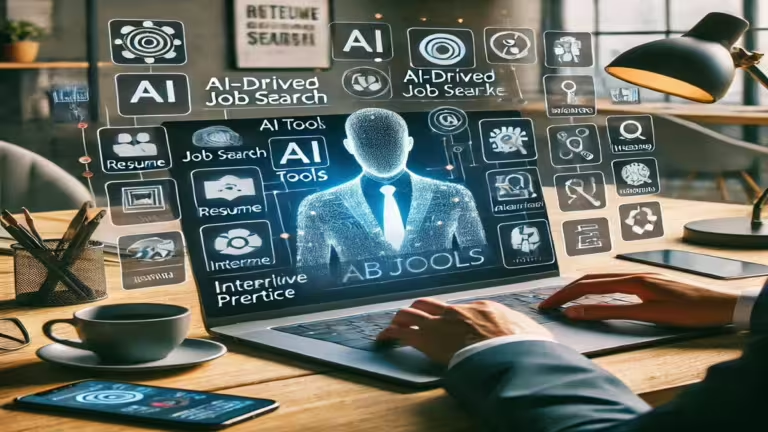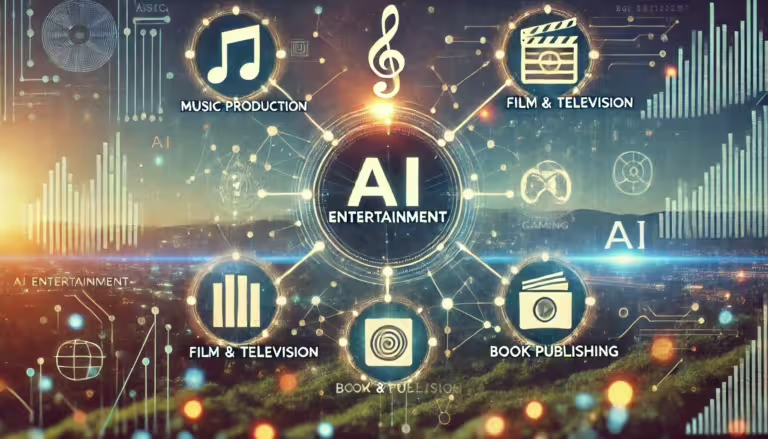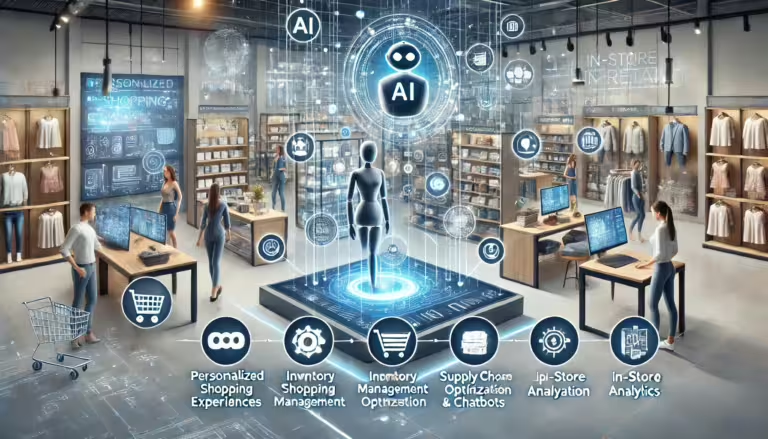In today’s rapidly evolving digital landscape, cybersecurity has become a critical concern for individuals, businesses, and organizations alike. As cyber threats grow increasingly sophisticated, traditional security measures are often insufficient to keep pace with the ever-changing tactics of malicious actors.
This blog post delves into the pivotal role that AI plays in safeguarding our digital world. We’ll explore how AI is transforming cybersecurity practices, enhancing threat detection capabilities, and enabling more efficient and effective responses to cyber attacks. From automating routine tasks to providing advanced threat intelligence, AI is proving to be an indispensable ally in the ongoing battle against cybercrime.
As we navigate through the complexities of AI in cybersecurity, we’ll examine its benefits, challenges, and real-world applications. We’ll also discuss best practices for implementing AI-powered security solutions and look ahead to the future of this rapidly advancing field. Whether you’re a cybersecurity professional, business leader, or simply someone interested in protecting your digital assets, this comprehensive guide will provide valuable insights into the role of AI in securing our interconnected world.
Understanding AI in Cybersecurity
Defining AI and Machine Learning
Artificial Intelligence, in the context of cybersecurity, refers to the development of computer systems capable of performing tasks that typically require human intelligence. These tasks include learning from experience, recognizing patterns, and making decisions based on complex data analysis. Machine Learning (ML), a subset of AI, focuses on the creation of algorithms that can automatically learn and improve from experience without being explicitly programmed.
In cybersecurity, AI and ML algorithms are designed to analyze vast amounts of data, identify potential threats, and respond to security incidents with minimal human intervention. These technologies enable security systems to adapt and evolve in response to new and emerging threats, providing a more dynamic and proactive approach to cyber defense.
The Evolution of AI in Cybersecurity
The integration of AI into cybersecurity is not a recent phenomenon. In fact, the concept dates back to the late 1980s when security professionals began exploring the potential of intelligent systems to enhance threat detection capabilities. However, it’s in recent years that AI has truly come into its own as a cornerstone of modern cybersecurity strategies.
The evolution of AI in cybersecurity has been driven by several factors:
1. Exponential growth in data: The sheer volume of data generated by networks, devices, and users has necessitated the use of AI to effectively process and analyze this information for security purposes.
2. Increasing sophistication of cyber threats: As attackers employ more advanced techniques, AI has become essential in detecting and responding to these complex threats in real time.
3. Shortage of skilled cybersecurity professionals: AI helps bridge the skills gap by automating many routine tasks and augmenting the capabilities of human analysts.
4. Advancements in AI and ML technologies: Breakthroughs in areas such as deep learning and natural language processing have expanded the potential applications of AI in cybersecurity.
Today, AI is being leveraged across a wide range of cybersecurity functions, from threat detection and incident response to risk assessment and security automation. As we’ll explore in the following sections, this technology is rapidly becoming indispensable in the fight against cybercrime.
Key Benefits of AI in Cybersecurity
1 Enhanced Threat Detection and Response
One of the most significant advantages of AI in cybersecurity is its ability to dramatically improve threat detection and response capabilities. AI-powered systems can analyze vast amounts of data from multiple sources in real time, identifying patterns and anomalies that might indicate a potential security threat. This level of analysis goes far beyond what human analysts can achieve, enabling the detection of both known and unknown threats with greater speed and accuracy.
AI algorithms can learn from historical data and continuously update their threat detection models, allowing them to stay ahead of evolving cyber threats. This adaptive approach is particularly valuable in identifying zero-day vulnerabilities and advanced persistent threats (APTs) that might evade traditional signature-based detection methods.
Moreover, AI can significantly reduce the time between threat detection and response. By automating the initial stages of incident response, such as isolating affected systems or blocking suspicious traffic, AI enables organizations to contain potential breaches more quickly, minimizing damage and reducing overall risk.
2 Automation of Repetitive Tasks
Cybersecurity teams often find themselves overwhelmed by the sheer volume of alerts and routine tasks they must handle daily. AI excels at automating these repetitive, time-consuming activities, freeing up human analysts to focus on more complex, strategic aspects of security.
Some examples of tasks that AI can automate are:
– Log analysis and correlation
– Vulnerability scanning and patch management
– Security policy enforcement
– User and entity behavior analytics (UEBA)
– Routine security reporting and documentation
By taking over these routine tasks, AI not only improves efficiency but also reduces the risk of human error, which can be a significant factor in security breaches. This automation also helps address the global shortage of skilled cybersecurity professionals by allowing existing teams to accomplish more with fewer resources.
3 Improved Situational Awareness and Decision-Making
AI’s ability to process and analyze vast amounts of data from diverse sources provides security teams with enhanced situational awareness. By correlating information from network logs, threat intelligence feeds, user behavior data, and external sources, AI can create a comprehensive picture of an organization’s security posture.
This improved visibility enables security professionals to make more informed decisions about resource allocation, risk management, and incident response. AI-powered systems can prioritize alerts based on their potential impact, helping analysts focus on the most critical threats first. Additionally, AI can provide context-rich insights and recommendations, supporting human decision-makers in formulating effective security strategies.
Furthermore, AI’s predictive capabilities allow organizations to take a more proactive approach to cybersecurity. By analyzing historical data and current trends, AI can forecast potential future threats and vulnerabilities, enabling organizations to strengthen their defenses before an attack occurs.
AI-Powered Cybersecurity Solutions
1 Network Security
In the realm of network security, AI is revolutionizing how organizations protect their digital infrastructure. AI-powered network security solutions leverage machine learning algorithms to analyze network traffic patterns, identify anomalies, and detect potential threats in real time.
These systems can:
– Check network traffic for signs of malicious activity
– Detect and prevent distributed denial-of-service (DDoS) attacks
– Identify compromised devices or insider threats
– Optimize firewall rules and network segmentation
By continuously learning from network behavior, AI-driven network security tools can adapt to new threats and provide more effective protection against sophisticated attacks that might evade traditional rule-based systems.
2 Endpoint Protection
Endpoint devices, such as computers, smartphones, and IoT devices, are often the first line of defense against cyber attacks. AI is enhancing endpoint protection by providing more intelligent and adaptive security measures.
AI-powered endpoint protection platforms can:
– Detect and prevent malware, including zero-day threats
– Analyze user behavior to identify potential account compromises
– Automatically isolate infected devices to prevent threat propagation
– Provide real-time threat intelligence to security teams
These advanced capabilities enable organizations to protect their endpoints more effectively, even as the number and diversity of connected devices continue to grow.
3 Cloud Security
As more organizations migrate their operations to the cloud, securing cloud environments has become a critical concern. AI is playing a crucial role in addressing the unique challenges of cloud security, including:
– Monitoring and analyzing cloud workloads for anomalies
– Ensuring proper configuration of cloud resources and access controls
– Detecting and preventing data exfiltration attempts
– Providing continuous compliance monitoring and reporting
AI-driven cloud security solutions can adapt to the dynamic nature of cloud environments, offering more robust protection against evolving threats while maintaining the flexibility and scalability that organizations require.
4 Identity and Access Management
AI is transforming identity and access management (IAM) by introducing more intelligent and context-aware authentication and authorization processes. AI-powered IAM solutions can:
– Analyze user behavior patterns to detect abnormal activities
– Implement risk-based authentication, adjusting security requirements based on context
– Automatize the provisioning and de-provisioning of user accounts
– Identify and revoke excessive or unused privileges
By leveraging AI in IAM, organizations can notably reduce the risk of unauthorized access and credential-based attacks while improving the user experience for legitimate users.
Challenges in Implementing AI for Cybersecurity
1 Data Quality and Privacy Concerns
The effectiveness of AI in cybersecurity heavily depends on the quality and quantity of data used to train and operate these systems. Organizations face several challenges in this area:
– Ensuring data accuracy and completeness
– Protecting sensitive data used in AI operations
– Complying with data protection regulations (e.g., GDPR)
– Addressing potential biases in training data
To overcome these challenges, organizations must implement robust data governance practices and carefully consider privacy implications when deploying AI-powered security solutions.
2 Integration with Existing Systems
Integrating AI-powered security tools with current cybersecurity infrastructure can be a complex and lengthy process. Challenges include:
– Ensuring compatibility with legacy systems
– Managing the increased complexity of the overall security architecture
– Training staff to effectively use and maintain AI-driven tools
– Balancing automation with human oversight and control
Successful integration requires careful planning, a phased approach, and ongoing collaboration between IT, security, and business teams.
3 Ethical Considerations and Bias
As AI systems become more prevalent in cybersecurity, ethical concerns and the potential for bias must be addressed. Key issues include:
– Ensuring transparency and explainability of AI decision-making processes
– Mitigating algorithmic bias that may lead to unfair or discriminatory outcomes
– Balancing security needs with individual privacy rights
– Addressing the potential misuse of AI technologies by malicious actors
Organizations must develop clear ethical guidelines and governance frameworks to ensure the responsible use of AI in cybersecurity.
Real-world examples of AI in Cybersecurity
1 Case Study 1: AI-Driven Threat Intelligence
A global financial institution implemented an AI-powered threat intelligence platform to enhance its cybersecurity posture. The system analyzes vast amounts of data from internal and external sources, including dark web forums, social media, and threat feeds. By leveraging natural language processing, and machine learning algorithms, the platform can:
– Identify apparent threats and vulnerabilities relevant to the organization
– Predict potential attack vectors based on current trends
– Provide actionable intelligence to security teams in real-time
Since implementation, the institution has reported a 40% reduction in time to detect and respond to potential threats, and a 30% decrease in false positives, allowing security analysts to focus on the most critical issues.
2 Case Study 2: Automated Incident Response
A large e-commerce company deployed an AI-driven automated incident response system to cope with the increasing volume of security alerts. The system uses machine learning to:
– Prioritize and categorize security incidents based on severity and potential impact
– Automate initial response actions, such as isolating affected systems or blocking suspicious IP addresses
– Provide guided remediation steps for security analysts
The implementation has resulted in a 60% reduction in mean time to resolve (MTTR) for security incidents and a 50% increase in the number of incidents handled per analyst, significantly improving the efficiency of the security operations center.
3 Case Study 3: AI-Enhanced Phishing Detection
A multinational corporation implemented an AI-powered email security solution to combat sophisticated phishing attacks. The system uses natural language processing and image analysis to:
– Detect subtle indicators of phishing attempts, such as slight variations in sender domains or logo manipulations
– Analyze the context and content of emails to identify social engineering tactics
– Continuously learn from new phishing techniques to improve detection capabilities
Since deploying the solution, the organization has seen a 75% reduction in successful phishing attacks and a 90% decrease in the time required to detect and neutralize phishing campaigns.
Best Practices for Implementing AI in Cybersecurity
1 Developing a Comprehensive AI Strategy
To effectively leverage AI in cybersecurity, organizations should:
– Align AI initiatives with overall security and business objectives
– Identify specific use cases where AI can provide the most value
– Develop a roadmap for AI implementation, including milestones and success metrics
– Invest in building or acquiring the necessary AI expertise and resources
2 Ensuring Data Quality and Privacy
To address data-related challenges, organizations should:
– Implement robust data governance policies and practices
– Regularly audit and clean data used for AI training and operations
– Ensure compliance with relevant data protection regulations
– Use techniques such as data anonymization and encryption to protect sensitive information
3 Regular Testing and Updating of AI Models
To maintain the effectiveness of AI-powered security solutions, organizations should:
– Continuously monitor and evaluate AI model performance
– Regularly retrain models with new data to adapt to evolving threats
– Conduct periodic security assessments of AI systems to identify potential vulnerabilities
– Stay informed about advancements in AI and ML technologies relevant to cybersecurity
The Future of AI in Cybersecurity
As AI technology advances, we can expect to see even more sophisticated and effective applications in cybersecurity. Some potential future developments include:
– Increased use of AI in predictive threat modeling and proactive defense strategies
– More advanced natural language processing capabilities for analyzing and responding to human-generated security threats
-The fusion of AI with other cutting-edge technologies, including quantum computing and 5G networks.
– Development of AI systems capable of autonomous decision-making in complex security scenarios
However, as AI becomes more prevalent in cybersecurity, we must anticipate new challenges, such as AI-powered attacks and the need for AI-specific security measures. The cybersecurity community will need to stay vigilant and adaptive to harness the full potential of AI while mitigating its risks.
Also Read: How AI In Healthcare Is Transforming Patient Care
Conclusion
Artificial Intelligence has emerged as a powerful ally in the ongoing battle against cyber threats. By enhancing threat detection, automating routine tasks, and improving decision-making capabilities, AI is enabling organizations to build more robust and adaptive cybersecurity defenses. While challenges remain in terms of data quality, integration, and ethical considerations, the benefits of AI in cybersecurity far outweigh the obstacles.
As we look to the future, it’s clear that AI will play an increasingly central role in protecting our digital world. Organizations that embrace AI-powered cybersecurity solutions and develop the necessary expertise to leverage these technologies effectively will be better positioned to defend against the evolving threat landscape.
However, it’s important to remember that AI is a silver bullet for only some cybersecurity challenges. Human expertise, creativity, and ethical judgment remain crucial components of any comprehensive security strategy. By combining the strengths of AI with human intelligence, we can create a more secure digital ecosystem that is resilient in the face of emerging threats.
As we continue to navigate the complex intersection of AI and cybersecurity, ongoing research, collaboration, and innovation will be essential to staying ahead of cybercriminals and protecting our increasingly interconnected world. The role of AI in cybersecurity is not just about technology – it’s about safeguarding our digital future and ensuring that the benefits of our connected world can be enjoyed safely and securely by all.









